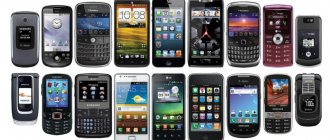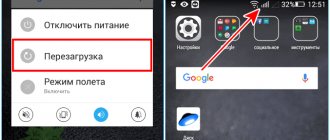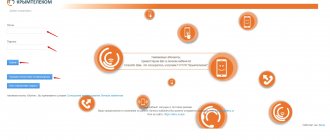The modern world can hardly be imagined without newfangled mobile smartphones and mobile communications, which we already discussed in the previous part of this material. Yes, we use all this hundreds of times a day. Every time we simply look at a smartphone or use it in any other way, we rely on cellular networks. Put “+” in the comments if you downloaded this material via the mobile Internet and are now reading it on the subway or on a bench in the park.
The best Telegram channel about technology (possibly)
Certainly not everyone understands how mobile communications work. That is why we decided to talk about it on the pages of our website. This is the second part of the material, which will dot the missing i’s. Yes, today smartphones impress with their speed, displays of millions of colors, loud speakers and a set of cameras. But without access to cellular networks, they turn into banal Tamagotchis. That is why the topic of cellular networks does not lose relevance.
Base stations. General information
This is what cellular antennas look like installed on the roofs of buildings. These antennas are an element of a base station (BS), and specifically a device for receiving and transmitting radio signals from one subscriber to another, and then through an amplifier to the base station controller and other devices. Being the most visible part of the BS, they are installed on antenna masts, roofs of residential and industrial buildings, and even chimneys. Today you can find more exotic options for their installation; in Russia they are already installed on lighting poles, and in Egypt they are even “disguised” as palm trees.
The connection of the base station to the telecom operator’s network can be done via radio relay communication, so next to the “rectangular” antennas of the BS units you can see a radio relay dish:
With the transition to more modern standards of the fourth and fifth generations, to meet their requirements, stations will need to be connected exclusively via fiber optics. In modern BS designs, optical fiber becomes an integral medium for transmitting information even between nodes and blocks of the BS itself. For example, the figure below shows the design of a modern base station, where fiber optic cable is used to transmit data from the RRU (remote controlled units) antenna to the base station itself (shown in orange).
The base station equipment is located in non-residential premises of the building, or installed in specialized containers (attached to walls or poles), because modern equipment is quite compact and can easily fit into the system unit of a server computer. Often the radio module is installed next to the antenna unit, this helps reduce losses and dissipation of power transmitted to the antenna. This is what the three installed radio modules of the Flexi Multiradio base station equipment look like, mounted directly on the mast:
What to do
Lawyers advise those wishing to check the legality of the actions of providers to visit several organizations:
- Prosecutor's office.
- Court.
- Rospotrebnadzor.
The radiation power density is determined by examination. If you see the possibility of mutual responsibility, call a private expert who has the necessary equipment (the cost of a typical field strength meter is measured in thousands of dollars). Sometimes officials warn subjects. The operator will temporarily reduce the radiation power. It is extremely difficult to independently verify compliance with the standards of the space in front of a residential building.
There is a precedent in Brest: residents of the Graevka district occupied a construction site and collected signatures against the construction of a cell phone tower in the courtyard area. The motivation is simple: the waves will harm the health of children and the lives of residents of adjacent houses. The actual harm is discussed, but well-known people began to die more often. Cause: Cancer:
- Zhanna Friske.
- Mikhail Zadornov.
- Singer Hvorostovsky.
Just a small list. Previously, there was no such discouraging mortality rate among non-old people. The World Health Organization stated:
- There is no reason to see harm. Weak radio signals are unable to have a harmful effect.
Base station service area
To begin with, it should be noted that there are different types of base stations: macro, micro, pico and femtocells. Let's start small. And, in short, a femtocell is not a base station. It is rather an Access Point. This equipment is initially aimed at a home or office user and the owner of such equipment is a private or legal entity. a person other than the operator. The main difference between such equipment is that it has a fully automatic configuration, from assessing radio parameters to connecting to the operator’s network. Femtocell has the dimensions of a home router:
A picocell is a low-power BS owned by an operator and using IP/Ethernet as a transport network. Usually installed in places where there is a possible local concentration of users. The device is comparable in size to a small laptop:
A microcell is an approximate version of the implementation of a base station in a compact form, very common in operator networks. It is distinguished from a “large” base station by a reduced capacity supported by the subscriber and lower radiating power. Weight, as a rule, is up to 50 kg and radio coverage radius is up to 5 km. This solution is used where high network capacities and power are not needed, or where it is not possible to install a large station:
And finally, a macro cell is a standard base station on the basis of which mobile networks are built. It is characterized by powers of the order of 50 W and a coverage radius of up to 100 km (in the limit). The weight of the stand can reach 300 kg.
The coverage area of each BS depends on the height of the antenna section, the terrain and the number of obstacles on the way to the subscriber. When installing a base station, the coverage radius is not always at the forefront. As the subscriber base grows, the maximum capacity of the BS may not be enough, in which case the message “network busy” appears on the phone screen. Then, over time, the operator in this area can deliberately reduce the range of the base station and install several additional stations in areas of greatest load.
When you need to increase network capacity and reduce the load on individual base stations, then microcells come to the rescue. In a megacity, the radio coverage area of one microcell can be only 500 meters.
In a city environment, oddly enough, there are places where the operator needs to locally connect an area with a lot of traffic (metro station areas, large central streets, etc.). In this case, low-power microcells and picocells are used, the antenna units of which can be placed on low buildings and on street lighting poles. When the question arises of organizing high-quality radio coverage inside closed buildings (shopping and business centers, hypermarkets, etc.), then picocell base stations come to the rescue.
Outside cities, the operating range of individual base stations comes to the fore, so the installation of each base station away from the city is becoming an increasingly expensive enterprise due to the need to build power lines, roads and towers in difficult climatic and technological conditions. To increase the coverage area, it is advisable to install the BS on higher masts, use directional sector emitters, and lower frequencies that are less susceptible to attenuation.
So, for example, in the 1800 MHz range, the range of the BS does not exceed 6-7 kilometers, and in the case of using the 900 MHz range, the coverage area can reach 32 kilometers, all other things being equal.
The connection with the subscriber is carried out using a switch
When you press the call button, your mobile device immediately contacts the nearest base station, which should allocate a free voice channel to it. It sends it first to the controller, and then to the switch, which tries to find the required subscriber in the home network or outside it. In the latter case, partner companies are connected and in the same way search for the required user within their network. It sounds complicated, but in reality it's simpler than ever.
After this, using the switch, a connection is made to a specific subscriber with whom you can talk via voice communication. If no problems arise, you should be able to do this quite successfully.
Vintage switch. Source: rusdoc.ru
They say that there is an echo in the tube - the faithful recognized the wiretapping. This myth is so old that it came from our grandmothers. It is not true. If you hear an echo while talking on the phone, it could mean anything but that someone is listening to you. One of the reasons for the occurrence of echo is the use of speakerphone by one of the subscribers. In this case, the sound from the phone may bounce off the walls and come back. An echo can also indicate problems with the noise reduction system.
Yes, by the way, cell phones don’t attract lightning either. The US National Oceanic and Atmospheric Administration has shown that cell phones, like small metal objects or jewelry, cannot attract lightning - although they prefer to strike tall objects. A person may be in danger not because he is talking on the phone, but because he is doing it in an inappropriate place - for example, in a field where there is a tall object.
By the way, today the operation of the mobile Internet is not so different from voice calls. Instead of another subscriber, your smartphone simply asks the base station for access to the World Wide Web, and it grants it to it.
Base station antennas. Let's take a look inside
In cellular communications, sector panel antennas are most often used, which have a radiation pattern with a width of 120, 90, 60 and 30 degrees. Accordingly, to organize communication in all directions (from 0 to 360), 3 (pattern width 120 degrees) or 6 (pattern width 60 degrees) antenna units may be required. An example of organizing uniform coverage in all directions is shown in the figure below:
And below is a view of typical radiation patterns on a logarithmic scale.
Most base station antennas are broadband, allowing operation in one, two or three frequency bands. Starting with UMTS networks, unlike GSM, base station antennas are able to change the radio coverage area depending on the load on the network. One of the most effective methods of controlling radiated power is to control the angle of the antenna, in this way the irradiation area of the radiation pattern changes.
Antennas can have a fixed tilt angle, or can be remotely adjusted using special software located in the BS control unit and built-in phase shifters. There are also solutions that allow you to change the service area from the general data network management system. In this way, it is possible to regulate the service area of the entire sector of the base station.
Base station antennas use both mechanical and electrical pattern control. Mechanical control is easier to implement, but often leads to distortion of the radiation pattern due to the influence of structural parts. Most BS antennas have an electrical tilt angle adjustment system.
A modern antenna unit is a group of radiating elements of an antenna array. The distance between the array elements is selected in such a way as to obtain the lowest level of side lobes of the radiation pattern. The most common panel antenna lengths are from 0.7 to 2.6 meters (for multi-band antenna panels). The gain varies from 12 to 20 dBi.
The figure below (left) shows the design of one of the most common (but already outdated) antenna panels.
Here, the antenna panel emitters are half-wave symmetrical electric vibrators above the conductive screen, located at an angle of 45 degrees. This design allows you to create a diagram with a main lobe width of 65 or 90 degrees. In this design, dual- and even tri-band antenna units are produced (though quite large). For example, a tri-band antenna panel of this design (900, 1800, 2100 MHz) differs from a single-band one, being approximately twice as large in size and weight, which, of course, makes it difficult to maintain.
An alternative manufacturing technology for such antennas involves making strip antenna radiators (square-shaped metal plates), in the figure above on the right.
And here is another option, when half-wave slot magnetic vibrators are used as a radiator. The power line, slots and screen are made on one printed circuit board with double-sided foil fiberglass:
Taking into account the modern realities of the development of wireless technologies, base stations must support 2G, 3G and LTE networks. And if the control units of base stations of networks of different generations can be placed in one switching cabinet without increasing the overall size, then significant difficulties arise with the antenna part.
For example, in multi-band antenna panels the number of coaxial connecting lines reaches 100 meters! Such a significant cable length and the number of soldered connections inevitably leads to line losses and a decrease in gain:
In order to reduce electrical losses and reduce solder points, microstrip lines are often made; this makes it possible to create dipoles and the power supply system for the entire antenna using a single printed technology. This technology is easy to manufacture and ensures high repeatability of antenna characteristics during serial production.
Research on the harms of towers from focus groups differs
Statistics on the dangers of cell towers are too contradictory.
There are indeed controversial studies on the Internet that try to prove the dangers of cell towers.
For example, in Germany, cell towers have been linked to cancer. Scientists took a thousand patients and analyzed how far they lived from the radiation source.
It turned out that within 400 meters from the tower the risk of getting cancer is three times higher than at a greater distance.
However, they clarified that this sample is unrepresentative : these are people of the same age and from the same social stratum - presumably a risk group.
There was a similar study in Israel. Of the 622 people observed who lived closer than 350 meters to the tower, eight people developed cancer. And out of 1,222 those who lived further - two.
At the same time, in Australia they conducted a cross-section of 29 years and found that there is no relationship between cellular infrastructure and cancer.
The data contradicts each other and proves only one thing, statistics are the biggest lie. Therefore, I propose to build on scientific facts.
Multiband antennas
With the development of third and fourth generation communication networks, modernization of the antenna part of both base stations and cell phones is required. Antennas must operate in new additional bands exceeding 2.2 GHz. Moreover, work in two and even three ranges must be carried out simultaneously. As a result, the antenna part includes rather complex electromechanical circuits, which must ensure proper functioning in difficult climatic conditions.
As an example, consider the design of the emitters of a dual-band antenna of a Powerwave cellular communication base station operating in the ranges 824-960 MHz and 1710-2170 MHz. Its appearance is shown in the figure below:
This dual-band irradiator consists of two metal plates. The larger one operates in the lower 900 MHz range; above it is a plate with a smaller slot emitter. Both antennas are excited by slot emitters and thus have a single power line.
If dipole antennas are used as emitters, then it is necessary to install a separate dipole for each wave range. Individual dipoles must have their own power line, which, of course, reduces the overall reliability of the system and increases power consumption. An example of such a design is the Kathrein antenna for the same frequency range as discussed above:
Thus, the dipoles for the lower frequency range are, as it were, inside the dipoles of the upper range.
To implement three- (or more) band operating modes, printed multilayer antennas have the greatest technological effectiveness. In such antennas, each new layer operates in a rather narrow frequency range. This “multi-story” design is made of printed antennas with individual emitters, each antenna is tuned to individual frequencies in the operating range. The design is illustrated in the figure below:
As in any other multi-element antennas, in this design there is interaction between elements operating in different frequency ranges. Of course, this interaction affects the directivity and matching of the antennas, but this interaction can be eliminated by methods used in phased array antennas (phased array antennas). For example, one of the most effective methods is to change the design parameters of the elements by displacing the exciting device, as well as changing the dimensions of the feed itself and the thickness of the dielectric separating layer.
An important point is that all modern wireless technologies are broadband, and the operating frequency bandwidth is at least 0.2 GHz. Antennas based on complementary structures, a typical example of which are “bow-tie” antennas, have a wide operating frequency band. Coordination of such an antenna with the transmission line is carried out by selecting the excitation point and optimizing its configuration. To expand the operating frequency band, by agreement, the “butterfly” is supplemented with a capacitive input impedance.
Modeling and calculation of such antennas are carried out in specialized CAD software packages. Modern programs allow you to simulate an antenna in a translucent housing in the presence of the influence of various structural elements of the antenna system and thereby allow you to perform a fairly accurate engineering analysis.
The design of a multi-band antenna is carried out in stages. First, a microstrip printed antenna with a wide bandwidth is calculated and designed for each operating frequency range separately. Next, printed antennas of different ranges are combined (overlapping each other) and their joint operation is examined, eliminating, if possible, the causes of mutual influence.
A broadband butterfly antenna can be successfully used as the basis for a tri-band printed antenna. The figure below shows four different configuration options.
The above antenna designs differ in the shape of the reactive element, which is used to expand the operating frequency band by agreement. Each layer of such a tri-band antenna is a microstrip emitter of given geometric dimensions. The lower the frequencies, the larger the relative size of such an emitter. Each layer of the PCB is separated from the other by a dielectric. The above design can operate in the GSM 1900 band (1850-1990 MHz) - accepts the bottom layer; WiMAX (2.5 – 2.69 GHz) – receives the middle layer; WiMAX (3.3 – 3.5 GHz) – receives the upper layer. This design of the antenna system will make it possible to receive and transmit radio signals without the use of additional active equipment, thereby not increasing the overall dimensions of the antenna unit.
Results
What is written above clearly demonstrates: the harm to the health of communication towers was greatly underestimated by scientists from the era of previous generations of honeycombs. Recent studies clearly indicate a detrimental range (peak - 80 meters), increasing the distance (over 300 meters) gradually weakens the effect. At first, the European commissions said: it’s safe near home; later studies began to refute the established opinion. At the same time, radiation from towers in developed countries is much lower than prescribed.
The Arab and Asian states were the first to challenge the lack of influence on people. A widespread inspection of damage from the towers followed. Radiation is invisible; it is rare that a person can describe what a microwave photon looks like.
Microwave photon
Research reports
- Camille Reese, MBA, New York (2016), research ordered by a client who felt unwell: “The first thing I did was take measurements on the first floor, in the room where the person received throat cancer. Then she examined the bedroom; the radiation level was continuously increasing. An external source was empirically established. The trail led along the street to a group of buildings that housed the antenna. Locals said: out of the residents of nine apartments, eight developed cancer, and in the remaining there were 3 miscarriages.”
- Report of the initiative group Bio-initiative 2012 (2014): “The bioeffect is provoked by relatively small doses of radiation. A few minutes of exposure to typical levels of cellular operators and radiotelephones is sufficient. The chronic effect provokes the disease.”
- EUROPEAEM Guideline 2105 for preventing injury from radio waves: “People living near base stations show a clear correlation with fatigue, depression, migraines, poor concentration.”
Swedish researchers said: many studies have been carried out on the effect of a single frequency, but a person is surrounded by a lot of stations. It is necessary to evaluate the impact of the resulting field of the electromagnetic spectrum. Scientists investigated the dangers of the Stockholm metro (stopsmartmetersbc.com/wp-content/uploads/2016/08/Hardell-RFR-Stockholm-Central-Railway-Station-some-medical-aspects-on-public-exposure-July2716.pdf), making certain conclusions: radiation is dangerous. The level of carcinogenicity, according to the findings, rivals that of radiation and asbestos.
Robert Kane, Ph.D., who worked extensively for Motorola, said:
- The belief in the harmlessness of microwaves regarding the destruction of DNA and other problems is rather born of an insufficient understanding of the issue. The mechanism of radiation absorption is mysterious; the process of destruction of molecules is clearly not described by a simple picture of the ionization of air molecules. Damage to chromosomes is obvious. Damage detection accompanies all frequencies used by humanity: radio, television, wireless communications, up to 9 GHz.
How do cell towers actually work?
Cell towers operate in a radiation spectrum that cannot affect cell DNA
Cell towers can be stand-alone or placed on existing structures: trees, poles, buildings.
They are usually placed at a height of at least 15–60 meters in order to cover the maximum area with them. They exchange signals with smartphones in the spectrum between microwaves and FM radio waves - such radiation is called non-ionizing radiation.
Non-ionizing radiation does not affect the structure of cells in tissues and therefore cannot cause cancer.
Ionizing, on the contrary, acts on DNA. Such radiation includes x-rays, gamma and ultraviolet. It can cause cancer. But cell towers have nothing to do with it.
When you make a call, a signal is sent from the phone's antenna to the nearest cell tower. It assigns it an available frequency channel, and then it is transmitted to the switching center, which sends it to its destination.
This channel sends voice signals back and forth, which is how you communicate.
Radiation from towers according to PES parameters does not exceed the norm
Under normal conditions, cell tower radiation is 15 times lower than the maximum permissible
The cell tower has a specific direction. If a maximum power of 40 W comes from it (usually no more than 20 W), then under vacuum conditions the PES drops below 0.1 W/m² at a distance of 45 meters.
In real measurements, the PES from a tower on a neighboring building drops to 0.0066 W/m² at a distance of 110 meters through a window into the room - 15 times less than the limit value , and this is if the antenna is aimed specifically at you.
I emphasize once again that the tower has a specific direction in a certain direction. At a distance of two meters below it, the PES is only 0.0078 W/m² - this is almost 13 times less than the permissible value.
It turns out that the tower on the roof of an office building cannot be associated either with cockroaches that died unexpectedly or with headaches.
Let's just say this is the placebo effect or the syndrome of searching for deeper meaning. Choose any definition - the important thing is that all this is nothing more than fantasy.











